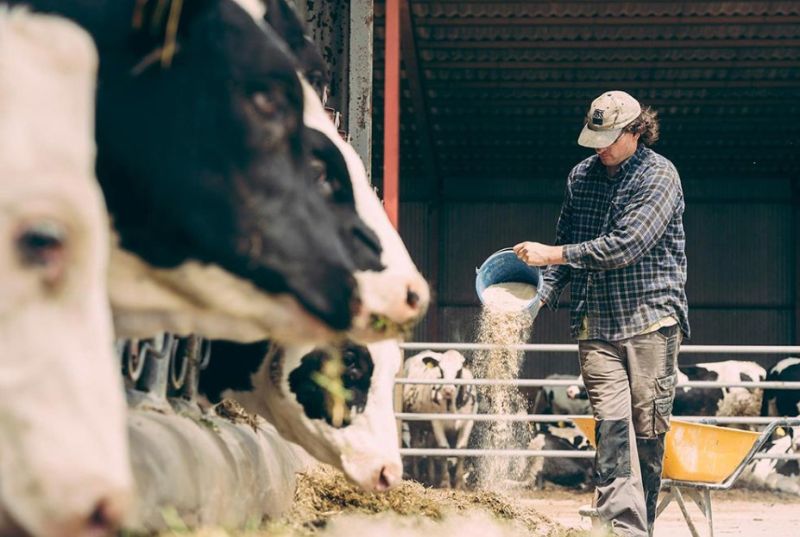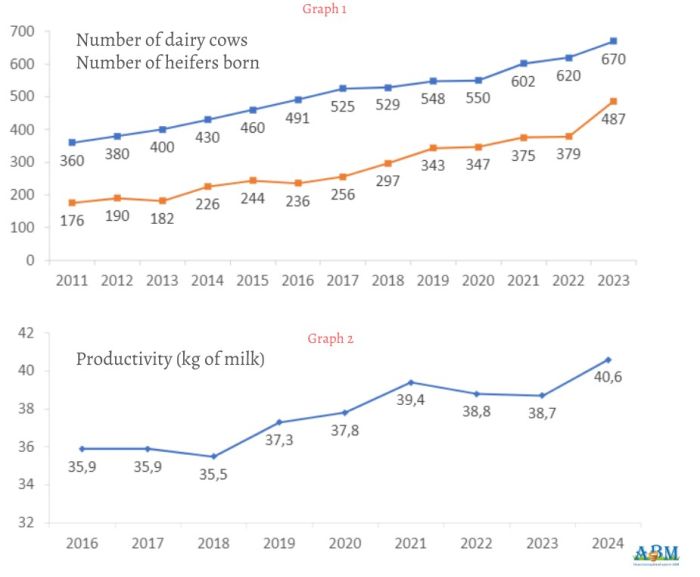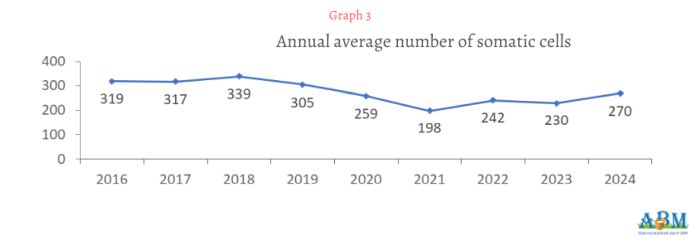milk,
farm
MAS BES: diversification, craftsmanship, tradition, quality. A unique farm in Spain

Mas Bes is a family story about the love of farming that began in 1584. Today, the daily yield per cow on the farm is 40.6 kg, the fat content is 3.9%, and the protein content is 3.43%. How does the farm achieve the desired targets and improve productivity? Valeriy Lototskyy, director of the Advisory Center of AMP, and Serhii Vyrvykyshka, a veterinarian at Veterinary Service Center, visited the farm and shared their impressions.
Within study trip to Spain experts from the Advisory Center of AMP visited the family farm Mas Bes, started back in 1584 with 4 cows. Currently, there are 670 cows on the farm, daily yield per cow is 40.6 kg, fat 3.9%, protein 3.43%. The farm is unique in that it has its own processing plant, a museum of milk production, a restaurant, and a hotel. More than 30,000 tourists visit the farm each year. In total, 23 people work here: 18 — employed directly on the farm, 5 — in tourist service and general management. The farm has objective data on the origin, reproduction, productivity and milk quality of cows for 37 generations.
The owner knows every production target number. Let's talk about some of them.
The first graph (see Graph1) shows the dynamics of the dairy cow population. The farm develops due to its own reproduction. Since 1960, only artificial insemination has been used. Since 2019, intensive use of sexed sperm has begun. Currently, all cows and heifers are inseminated with sexed semen 3 times, and only after that they switch to normal semen. For some animals, sperm of the Aberdeen-Angus breed is used, and recently — also the Belgian blue.
In the second graph (see Graph 2), we see changes in the productivity of cows over the last 8 years. Significant growth after 2019 is noticeable. The owner explains this by installing a cooling system for the animals. Before that, under the influence of heat stress, productivity dropped to 27 l, fertilization — to 5%. After improving the comfort of the animals, we see an average annual increase in productivity by about 2 liters of milk. Conception rate in the summer months is now about 35%. Thanks to this, it was possible to achieve uniform calvings throughout the year.

The farm cooperates with three groups of veterinarians. The first works with reproduction, the second with biosafety and calf health, and the third, Q-Liet, provides monthly selection of individual milk samples and advises on milk quality, safety and mastitis prevention.
The third graph shows the annual average number of somatic cells in collected milk:

In 2019, the farm started using the HIPRA Starvak mastitis vaccine. A decrease in the number of cases of acute mastitis and CSC in collected milk was noted. In 2023, vaccinations were stopped, but two additional people were hired, who are responsible for the quality of litter and the level of hygiene in the premises. They want to check the feasibility of vaccination.
In addition to milk production and processing, the farm has its own feedlot, produces and sells beef and extremely tasty meat products.
If you have additional questions, write to us at facebook, we will definitely answer in the next publications.
Photo :Valery Lototskyy